
The Four Legs to a Stable Open Source Solution
In the first part to this series, we put forward the argument that incomplete provision of important support factors was limiting the adoption of open source software in the enterprise. We can liken the absence of these factors to having a chair with one or more absent or broken legs.
This second part of the series goes into the four legs of a stable, open source solution. These four legs are software, structure, methods and documentation. When all four are provided, we can term this a total open solution.
These considerations are not simply a matter of idle curiosity. New approaches and new methods are required for enterprises to modernize their IT systems while adding new capabilities and preserving sunk assets. Extending and modernizing existing IT is often not in the self-interests of the original supplying vendors. And enterprises are well aware that IT commitments can extend for decades.
While the benefits and capabilities of open source software become apparent by the day, rates of open source software adoption lag in enterprises. We have seen entire Internet-based businesses arise and get huge in just a few short years. But it is the rare existing enterprise that has committed to and embraced similar Web-oriented architectures and IT strategies [1].
The enterprise IT ecosystem is evolving to become an unhealthy one. New software vendors have generally abandoned enterprises as a market. Much more action takes place with consumer apps and Internet plays, often premised on ad-based revenues or buzz and traffic as attractors for acquisition. Existing middle-tier enterprise vendors are themselves being gobbled up and disappearing. I’m sure all observers would agree that IT software and services are increasingly dominated by a shrinking slate of vendors. I suspect most observers — myself included — would argue that enterprise-based IT innovation is also on the wane.
The argument posed in the first part of this series is that such atrophy should not be unexpected. The current state of open source software is not addressing the realities of enterprise IT needs.
And that is where the other legs of the total open solution come in. In their entirety, they amount to a form of capacity building for the enterprise [2]. It is not simply enough to put forward buzzwords matched with open source software packages. Exciting innovations in social networks, collaboration, semantic enterprise, mobile apps, REST, Web-oriented architectures, information extraction, linked data and a hundred others are being validated on the Internet. But until the full spectrum of success and adoption factors gets addressed, enterprises will not embrace these new innovations as central to their business.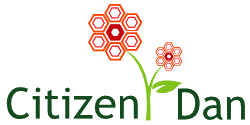
As we describe these four legs to the total open solution, we will sometimes point to our Citizen Dan initiative [3]. That is not because of some universal applicability of the system to the enterprise; indeed Citizen Dan is mostly targeted to local communities and municipalities. But, Citizen Dan does represent the first instance known to us where each of these total open solution success factors is being explicitly recognized and developed. We think the approach has some transferability to the broader enterprise.
Let’s now discuss these four legs in turn.
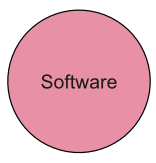
Leg One: Software
Of course, the genesis of this series is grounded in open source software and what it needs to do in order to find broader enterprise acceptance. Clearly that is the first leg amongst the four to be discussed. We also have acknowledged that, generally, best-of-breed open source software is also better documented at the code level, and has documented APIs. We will return to this topic under Leg Four below.
Open source software useful to the enterprise is often a combination of individual open source packages. Some successful vendors of open source to the enterprise in fact began as packagers and documenters of multiple packages. Red Hat for Linux or Alfresco in document management or Pentaho in business intelligence come to mind, as examples.
In the case of Citizen Dan, here are the open source packages presently contained in its offering: Linux (Ubuntu), Apache, MySQL, PHP (these comprising the LAMP stack), Drupal, a variety of third-party Drupal modules, Virtuoso, Solr, ARC2, Smarty, Yahoo UI, TinyMCE, Axiis, Flex, ClearMaps, irON, conStruct, structWSF, and some others. Such combinations of packages are not unusual in open source settings, since new value-add typically comes from extensions to existing systems or unique ways to combine or package them. For example, the installation guide for structWSF alone is quite comprehensive with multiple configuration and test scripts.
Thus, besides direct software, it is also critical that configuration, settings, installation guidance and the like be addressed to enable relatively straightforward set-up. This is an area of frequent weakness. Targeting it directly is a not-so-secret factor for how some vendors have begun to achieve some success with the enterprise market.
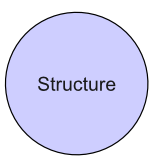
Leg Two: Structure
All software works on data. While some data is unstructured (such as plain text) and some is semi-structured (such as HTML or Web pages that mixes markup with text), the objective of information extraction or natural language processing is to extract the “structure” from such sources. Once extracted, such structure can interoperate on a common footing with the structured data common to standard databases.
Thus, we use “structure” to denote the concepts and their relationships (the “schema” or “ontology”) and the indicators and data (attributes and values) to describe them, and the “entities” (distinct individuals or nameable instances) that populate them. In other words, “structure” refers to all of the schema (concepts + relationships) + data + attributes + indicators + records that make up the information upon which software can operate.
Structure exists in many forms and serializations. Generally, software represents its internal information in one or a few canonical storage and manipulation formats, though that same software may also be able to import (ingest) or export its information and data in many different external formats.
In our semantic enterprise work, especially with its premise in ontology-driven applications using adaptive ontologies, structure is an absolutely essential construct. But, frankly, no information technology system exists that does not also depend on structure to a more or less greater extent.
The interplay between software and structure is one source of expertise that vendors guard closely and use to competitive advantage. In years past, proprietary software could partially hide the bases for performance or algorithmic advantages. Expert knowledge and intimate familiarity with these systems was the other bases to keep these advantages closely held.
It is perhaps not too surprising given this history, then, that the software industry really has very little emphasis or discussion on the interaction between software and structure. But, if software is being brought in as open source, where is the accompanying expertise or guidance for how data structure can be used to gain full advantage? The same acquired knowledge that, say, accompanied the growth of relational databases in such areas as schema development, materialized views or (de)normalization now needs to be made explicit and exposed for all sorts of open source systems.
In the realm of the semantic enterprise we are seeing attempts at this via open source ontologies and greater emphasis on APIs and documentation of same. Citizen Dan, for example, will be first publicly released with an accompanying MUNI ontology as a reference schema and starting point. Descriptions and methods for how to obtain indicator data and relevant attribute and entity information for the domain will also accompany it.
As open source software continues to emphasize semantics and interoperability, exemplar structures and best practices will need to be an essential part of the technology transfer. Just as the “secrets” of much software began to be opened up via open source, so too must the locked-up expertise of experts and practitioners in how to effectively structure data be exposed.
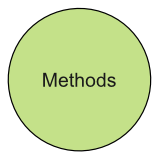
Leg Three: Methods
The need for structure explication and guidance is but one unique slice of a much broader need to expose methods and best practices surrounding a given information management initiative. The reason that any open source software might be adopted in the first place is based on the hope for some improved information management process.
Recently I have been touting MIKE2.0, the first open source, replicable and extensible framework for organizing and managing information in the enterprise. MIKE2.0 (Method for an Integrated Knowledge Environment ) provides a comprehensive methodology that can be applied across a number of different projects within the information management space. It can be applied to any type of information development.
MIKE2.0 provides an organized way to describe the why, when, how and who of information management projects. Via standard templates and structures, MIKE2.0 provides a consistent basis to describe and manage these projects, and in a way that helps promote their interoperability and consistency across the enterprise.
MIKE2.0 and its forthcoming extensions, one of which we have developed for the semantic enterprise and are now extending into the semantic government in the context of Citizen Dan, are exciting because they provide a systematic approach and guidance for how (and for what!) to document new projects and initiatives. What MIKE2.0 represents is the first time that the embedded, proprietary expertise of traditional IT consultants has been exposed for broader use and extension.
The real premise behind any approach like MIKE2.0 or variants is to codify the expertise and knowledge that was previously locked up by experts and practitioners. The framework in MIKE2.0 provides a structure by which knowledge bases of background information can be assembled to accompany an open source project. This structure extends from initial evaluation and design all the way through operation and end of life.
The ‘CIS DocWiki’ that is being developed to accompany Citizen Dan is such an example of a MIKE2.0-informed knowledge base. At present, the CIS DocWiki has more than 300 specific articles useful to community indicator systems for local governments, and a complete deployment and maintenance methodology. By public release, it will likely be 2-3 times that size. All of this will be downloadable and installable as a wiki, and as open source content, ready for branding and modification for any local circumstance. CIS DocWiki is a natural methods and documentation complement to the Citizen Dan software and its MUNI structure. Release is scheduled for summer.
As we will focus on in Part 3 of this series, we are combining a MIKE2.0 organizational approach with a documentation and single-source publication platform to fulfill the method and documentary aspects of projects. It was really through the advantages gained by the combination of these pieces that we began to see the inadequacy of many current open source projects for the enterprise.
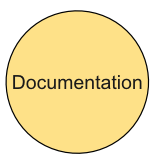
Leg Four: Documentation
This series began in part with a recognition that superior open source projects are often the better documented ones. But, even there, documentation is often restricted to code-level documentation or perhaps APIs.
As the material above suggests, documentation needs to extend well beyond software. We need documentation of structure, methods, best practices, use cases, background information, deployment and management, and changing needs over the lifetime of the system. And, as we have also seen in Part 1, the lifetime of that system might be measured in decades.
Documentation is no equal to paid partners and their expertise. But, documentation can be cheaper, and if that documentation is sufficient, might be a means for changing the equation in how IT projects are solicited, acquired and managed.
Today, enterprises appear to be stuck between two difficult choices: 1) the traditional vendor lock-in approach with high costs and low innovation; or 2) open source with minimal documentation and vendor knowledge and little assurance of support longevity.
These trade-offs look pretty unpalatable.
Documentation alone, even as extended into the other legs of the solution, is not prima facie going to be a deal maker. But, its absence, I submit, is a deal breaker. Just as open source itself has taken some years to build basic comfort in the enterprise, so too a concerted attack on all acceptance factors may be necessary before actual wide adoption occurs.
The ‘CIS DocWiki’ platform noted for Citizen Dan we hope will be an exemplar for this combination of documentation and methodology. It is a single-source publishing platform that allows the entire knowledge base behind a given IT initiative to be used for collaboration, operational, training or collateral purposes. And all of this is based on open source software.
Software vendors need to recognize these documentation factors and build their ventures for success. Yes, writing code and producing software is a lot more fun and rewarding than (yeech) documentation. But, unless our current generation of vendors that is committed to open source and its benefits takes its markets seriously — and thus commits to the serious efforts these markets demand — we will continue to see minimal uptake of open source in the enterprise.
An Interacting Whole Greater than the Sum of its Parts
Each of these four legs of a total open solution can interact with and reinforce the other parts. Once one begins to see the problem of open source adoption in the enterprise as a holistic one, a new systems-level perspective emerges.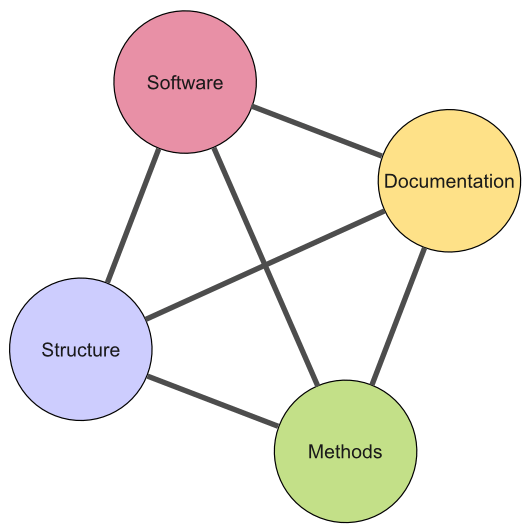
Enterprises know full well that software is only one means to address an information management problem, and only a first step at that. Traditional vendors to the enterprise also understand this, which is why through their embedded systems and built-up expertise they have been able to perpetuate what often amounts to a monopoly position.
Pressures are building for a earthquake in the IT landscape. Enterprises are on an anvil of global competition and limited resources. Existing IT systems are not up to the task but too expensive and embedded to abandon. Traditional vendors have near monopoly positions and little incentive to innovate. New software vendors don’t have the expertise and gravitas to handle enterprise-scale challenges. Meanwhile, the rest of the globe is leapfrogging embedded systems with agile, Web-based systems.
The true innovation that is occurring is all based around open source, nurtured by the global computing platform of the Internet, and fueled by countless individuals able to compete on downward-spiraling cost bases. But on so many levels, open source as presently constituted, either fails or poses too many risks to the commercial enterprise.
The Internet itself was the basis of a paradigm shift, but I think we are only now seeing its manifestation at the enterprise level. We are also now seeing global reordering and changes of the economic order. How will companies respond? How will their IT systems adapt? And what will new vendors need to do and recognize in order to thrive in this changing environment?
I’m not sure I have found the language or rhetoric to convey what I see coming, and coming soon. I know open source is part of it; I know enterprises need it; and I know what is presently being offered does not meet the test.
As I noted in our first part, the mantra that we use in Structured Dynamics to express this challenge is, “We’re Successful When We’re Not Needed“. I think the essence behind this statement is that premises of dependency or proprietary advantage will not survive the jet streams of change that are blowing away the old order.
Sound like too much hyperbole? Actually, my own gut feeling is that it is not nearly enough.
In any case, windy rhetoric always falls short if there is not some actionable next steps. In these first two parts of this series, I have tried to present the ingredients that need to go into the cake. In the third part I try to offer a new, and complementary, open source means for bringing stability to the foundation.
In all cases, though, I think these challenges are permanent ones and do not lend themselves to facile solutions. Four legs, or seven foundations, or twelve steps are all just too simplistic for dealing with the global and complex tsunamis blowing away the old order.
One really does not need to lick a finger to sense the direction of these winds of change. It is coming, and coming hard, and all of it is from the direction of open source. What enterprises do, and what the vendors who want to serve them do, is perhaps less clear. I think open source offers a way out of the box in which enterprise IT is currently stuck. But, at present, I also think that most open source options do not have the necessary legs to stand on.





